Lithium Werks is pleased to share this excellent article on battery sustainability and Life Cycle Assessment recently published by About:Energy. The article is the result of an independent analysis that lists the Lithium Werks 18650 Energy Cell as the total “cradle to grave” lowest carbon footprint cell vs. such leading cells as LG and Molicell 18650s.
In the world of electrification, data is more crucial than ever for the rapid decarbonization of battery usage. With new EU regulation such as the Battery Passport, more data is needed to understand battery Environmental, Social, and Governance (ESG) metrics.
Key Takeaways:
- Sustainability should be a key criterion in the design and use of batteries. However, it is rarely considered in decision-making during battery pack programs because ESG data on batteries are sparse, unverified, or inconsistent.
- The chemical composition of batteries is a key factor in determining the amount of embedded carbon, but this information is often not transparent. Providing this data would enable more sustainable decision-making for downstream users.
- The lifetime of a battery significantly impacts its carbon footprint, as the carbon emitted during manufacturing and production is amortized over its lifetime.
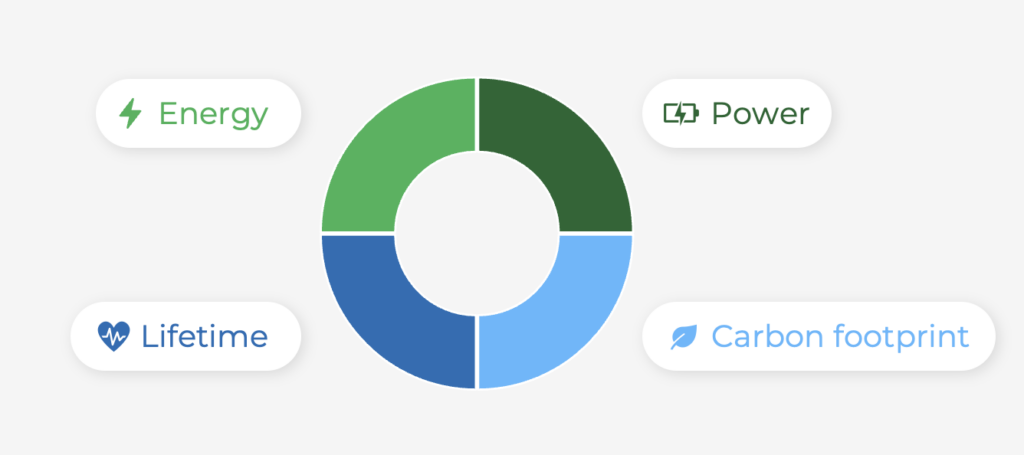
About:Energy dismantled three batteries, including the Molicel P45B cell (NCA, high power), LG M50LT (NMC, high energy), and the Lithium Werks M1B cell (LFP, long life). Although these cylindrical batteries, used in e-mobility applications, appear similar on the surface, a different truth and impact lie inside.
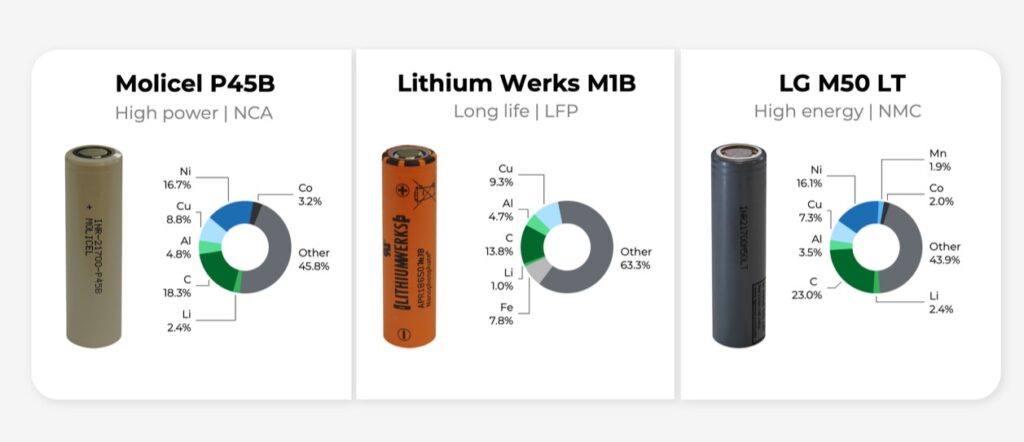
The Life Cycle Assessment (LCA) approach enhances the understanding of how raw materials and manufacturing processes for batteries contribute to providing granular and accurate environmental impact information. The graph shows Molicel P45B, Lithium Werks M1B, and LG M50 LT cells’ carbon footprints using kg CO2-eq per kWh from cradle-to-gate.
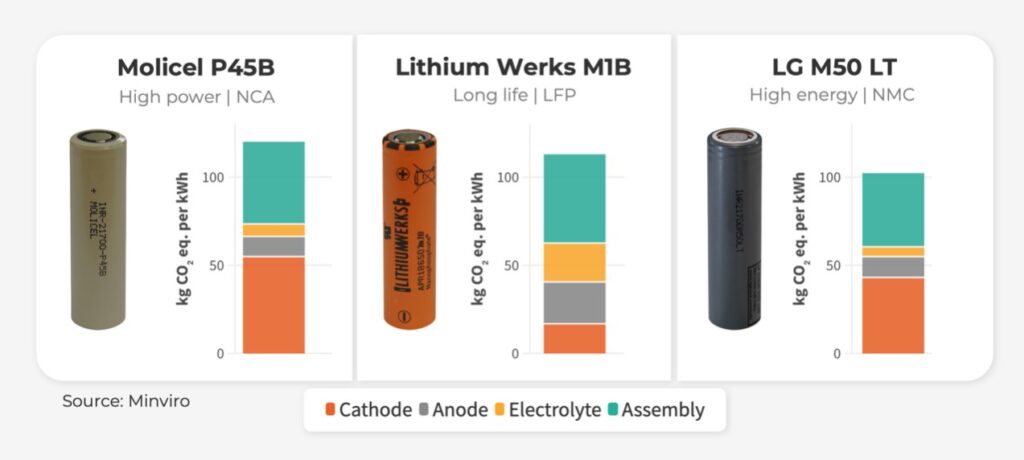
The new European battery regulation requires the total energy provided by the battery over its expected service life to be evaluated, meaning that battery lifetime must be included into the carbon footprint. This means that battery lifetime must be included into the carbon footprint. The total energy is calculated by considering the battery’s service life and energy capacity. The service life, depending on the battery’s application (e.g., in light-duty vehicles, heavy-duty vehicles, or energy storage systems), can be measured in kilometers or directly in cycles. To offer a preliminary perspective on the carbon footprint, considering cycles, Minviro conducted a calculation based on the lifetime capacity of the cells. The Lithium Werks LFP cell has the lowest lifetime impact due to its longer cycle life. This is an important consideration, especially for novel chemistries like sodium-ion, where cycle life is a competitive factor.
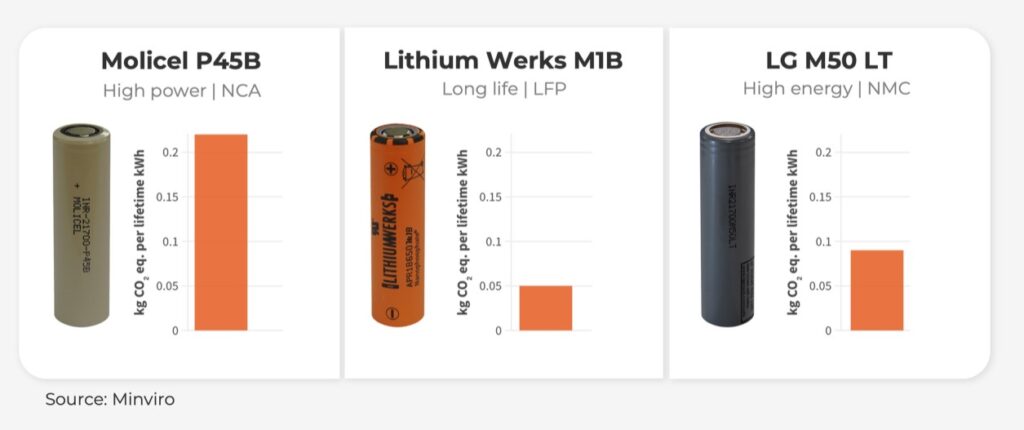
The relationship between a battery’s lifetime and its potential carbon footprint suggests that an increase in cycle life can lead to a decrease in environmental lifetime impact. Notably, the Lithium Werks cell, with its long life, stands out as having the potential for exceptionally low lifetime impacts.
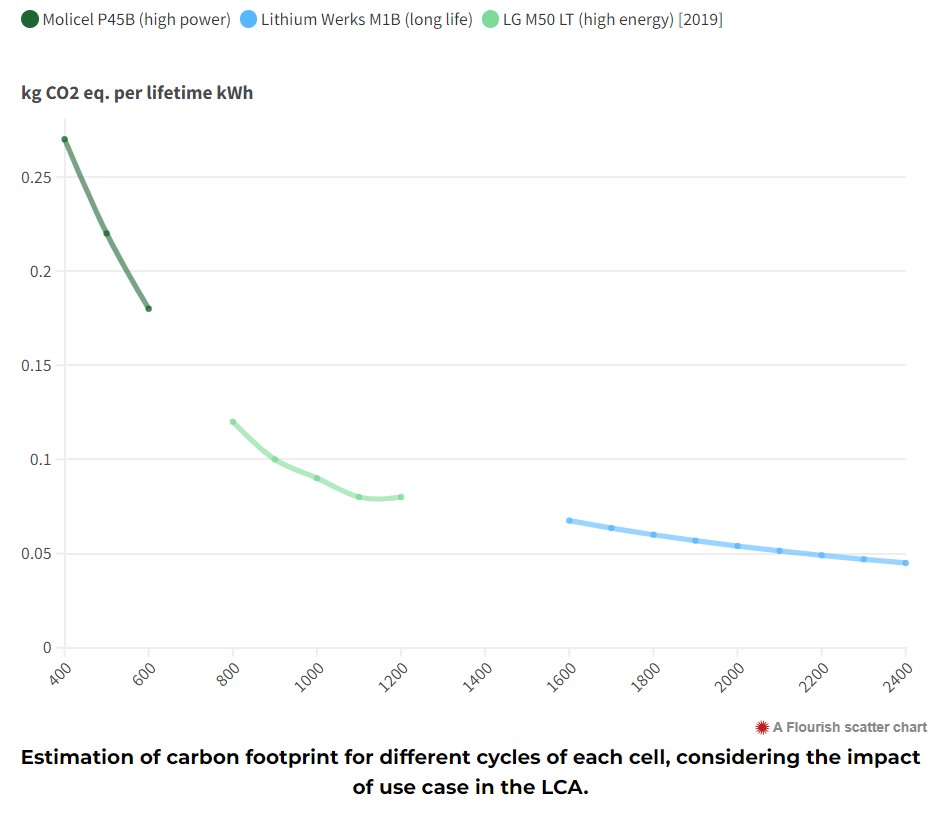
Read the entire article here: https://www.aboutenergy.io/post/battery-sustainability-insights-on-environmental-impact-and-lca
